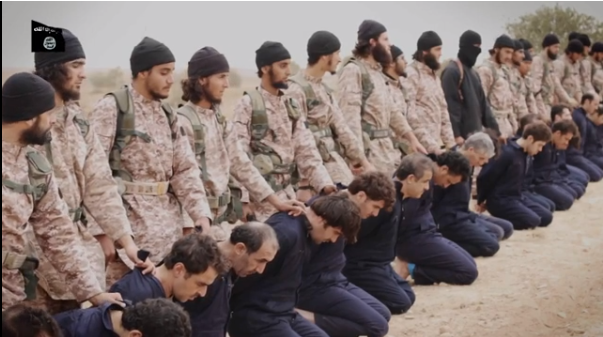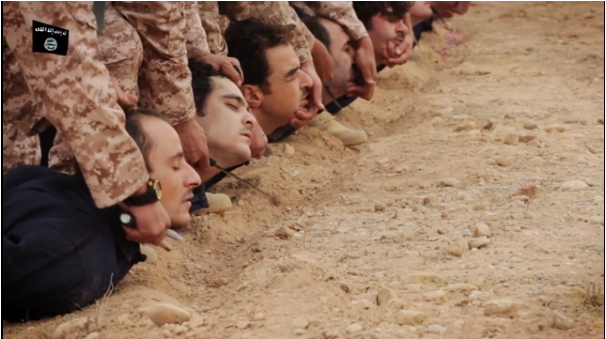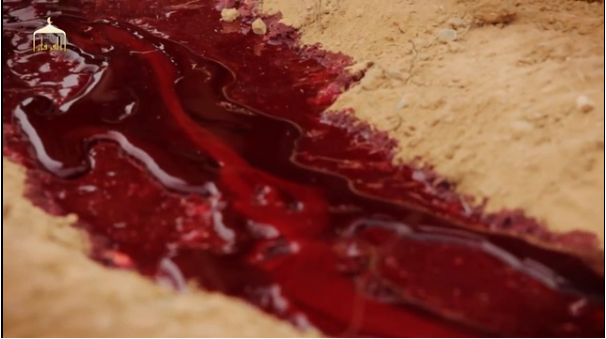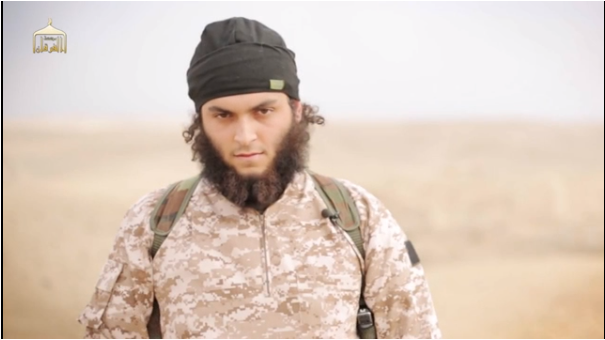 1. Prologue
1. Prologue
Modes of Politicised Image-making
4-part slide presentation, 2015Parts 1+2 - Discipline lecture delivered at The Wheeler Centre, Melbourne & Westspace Gallery, Melbourne, 2015
Parts 3+4 - Discipline lecture continued at Westspace Gallery, Melbourne, 2015
Parts 1+2 - Keynote for the Artspace Finissage, Artspace, Sydney, 2015 Notes only
Introduction
This talk is motivated not just by the ISIS videos, but by the absence of discussion about their content and effect.
The videos are less images per se, and more instruments of terror.
Their deadly irony is their political effect - using Hollywood tropes but emboldened by radical change.
Voided Effects
![]() Saturation - 1960s accelerated production & proliferation of images
Saturation - 1960s accelerated production & proliferation of images
![]() Replication - 1980s acts of quotation, detournement & recontextualization of images
Replication - 1980s acts of quotation, detournement & recontextualization of images
![]() Atomization - 2000s digital images dematerialized, immaterialized and rematerialized, through micro means of reconstruction & redistribution
Atomization - 2000s digital images dematerialized, immaterialized and rematerialized, through micro means of reconstruction & redistribution
Terrorized Language
![]() Exploited Images - trade tricks utilised in Hollywood movies, television advertising, music videos & video art production — all of whom ape cinematic effects
Exploited Images - trade tricks utilised in Hollywood movies, television advertising, music videos & video art production — all of whom ape cinematic effects
![]() Subverted Meanings - the 'critique of power' extolled in lo-fi terrorist tracts, ethical Hollywood movies, sensationalist reality-feeling computer games, zeitgeist music videos, large-scale museographic commissions
Subverted Meanings - the 'critique of power' extolled in lo-fi terrorist tracts, ethical Hollywood movies, sensationalist reality-feeling computer games, zeitgeist music videos, large-scale museographic commissions
![]() Employed Words - language used in all of the above
Employed Words - language used in all of the above
Narratives of the ISIS Phenomenon
Who is ISIS and why are they doing what they do?
![]() Strategic / Tactical
Strategic / Tactical
(a) The Killing Of Osama Bin Laden (London Review of Books, 2015) Seymour Hersh – The involvement of Pakistan’s government in supplying the US OBL
(b) Islamic State: The Digital Caliphate (published excerpts, 2015) Abdel Bari Atwan – how Abu Bakr al-Baghdadi manages ISIS
(c) The Terror Strategist: Secret Files Reveal the Structure of Islamic State (Der Spiegel online, April 2015) Christopher Reuters – Haji Bakr’s strategic plans for ISIS from 2012 onwards – an ex-Sadam Hussein official
(d) Blood Year (2015) – (The Monthly Essays, July 2015) David Kilcullen
(e) Detailed Analysis Of Islamic State Propaganda Video (2015) – The Quilliam Foundation & The Terrorism Research & Analysis Consortium
(f) ‘Beyond anything we have ever seen’: beheading videos and the visibility of violence in the war against ISIS – (International Affairs, Vol.91, No.4, July 2015) Simone Molin Friis
![]() Religious / Doctrinaire
Religious / Doctrinaire
7th Century Muslim directives in the Qur’an
![]() Cultural / Semiotic
Cultural / Semiotic
An act of discernment – not an argument
The 11th century is yesterday - a dehistoricised present
The Muslim Brotherhod - a modern historical microcosm symbolically replayed in the ISIS videos
Narratives of Political Art
Redefining 'political art' by admitting that all Art is unavoidably political: artistic endeavours of any possible kind can be aligned with or embedded within any political persuasion.
The limitations of promoting 'political art' are embedded in two entwined and encroaching discourses:
(a) the naming of political art by artists, curators, critics and their conjoined institutional network
(b) the declaiming of politicised events and actions through the construction and representation of those actions by either its supporters or its opponents.
The realm of representation – despite the smokescreen of self-obfuscating post-post-post-modernist theatrics and the obliterating envelopment of culture by mass-marketed entertainment franchises – is one of endless virtual control by anyone for any purpose.
(a) Institutional Affect - video games, music videos
(b) Institutional Fiction - Hollywood realism
(c) Institutional Phantasm - Hollywood fantasy
(d) Institutional Effects - special effect make-up & CGI compositing
(e) Institutional Critique - contemporary art, modern military-sci-fi
(f) Institutional Attack - ISIS videos
Special thanks to Helen Hughes (Discipline), Amita Kirpalani (The Wheeler Centre), Liang Luscombe (Westspace) & Anthony Kitchener.
Text © Philip Brophy 2015. Images © respective copyright holders




